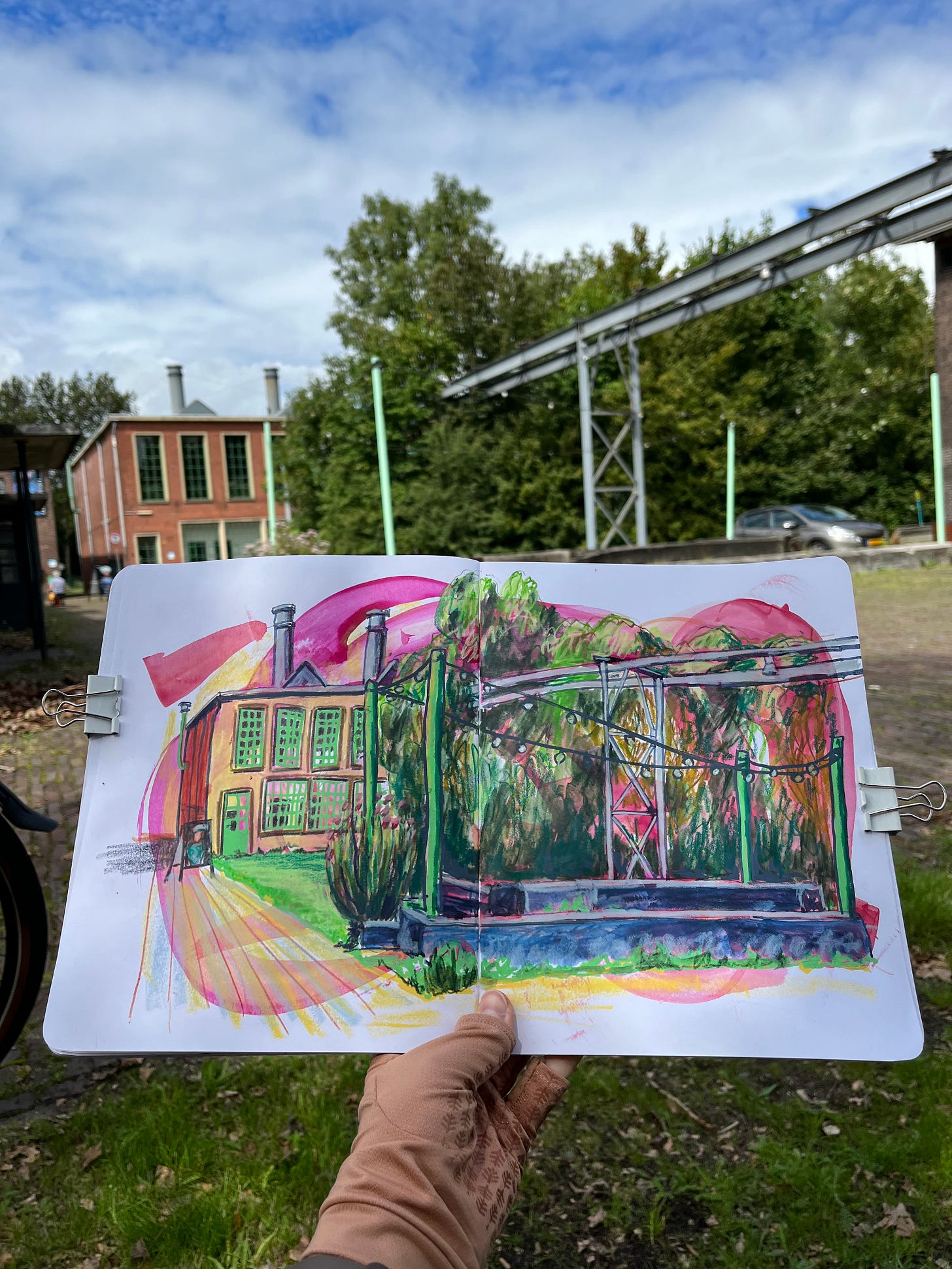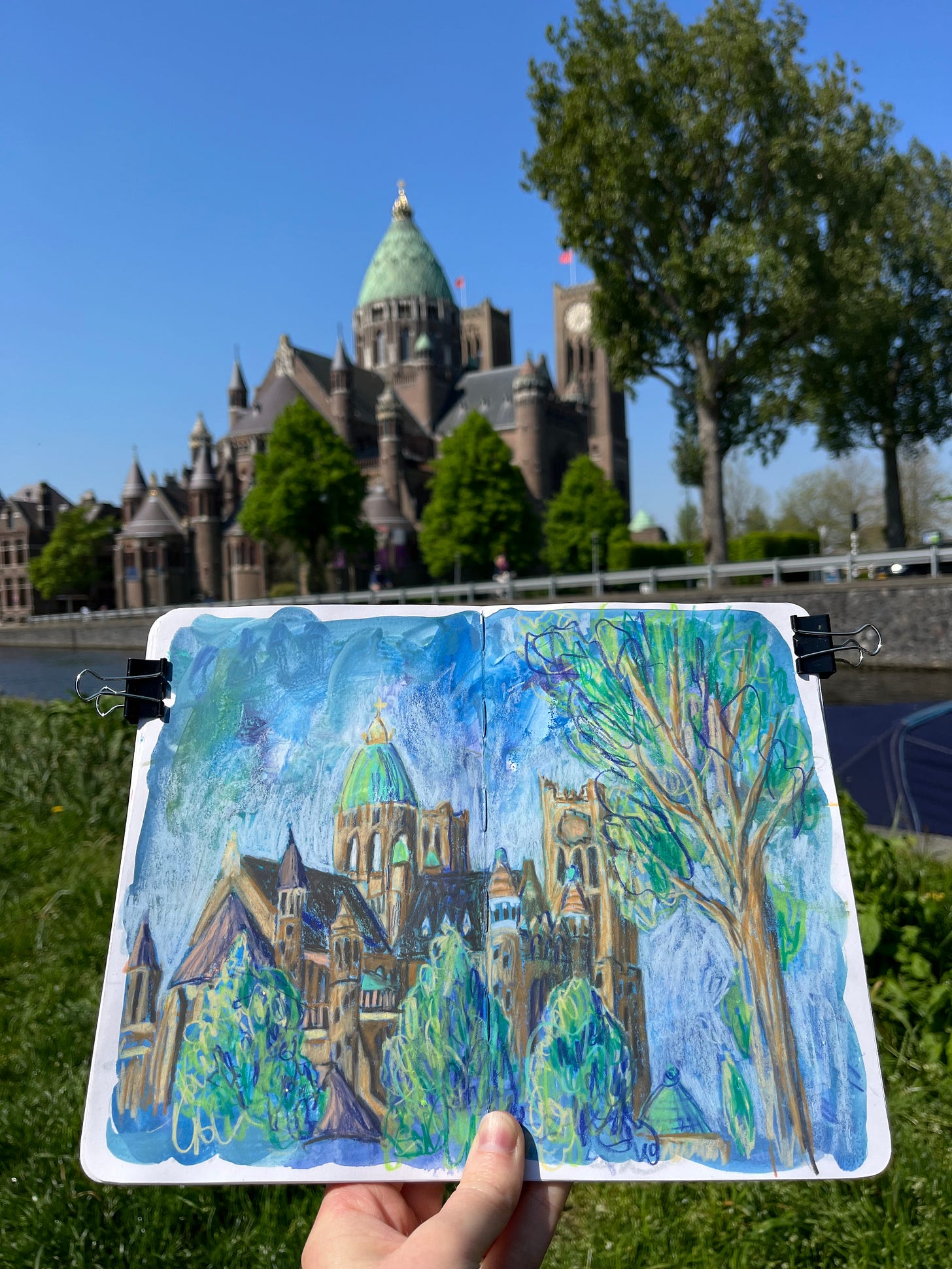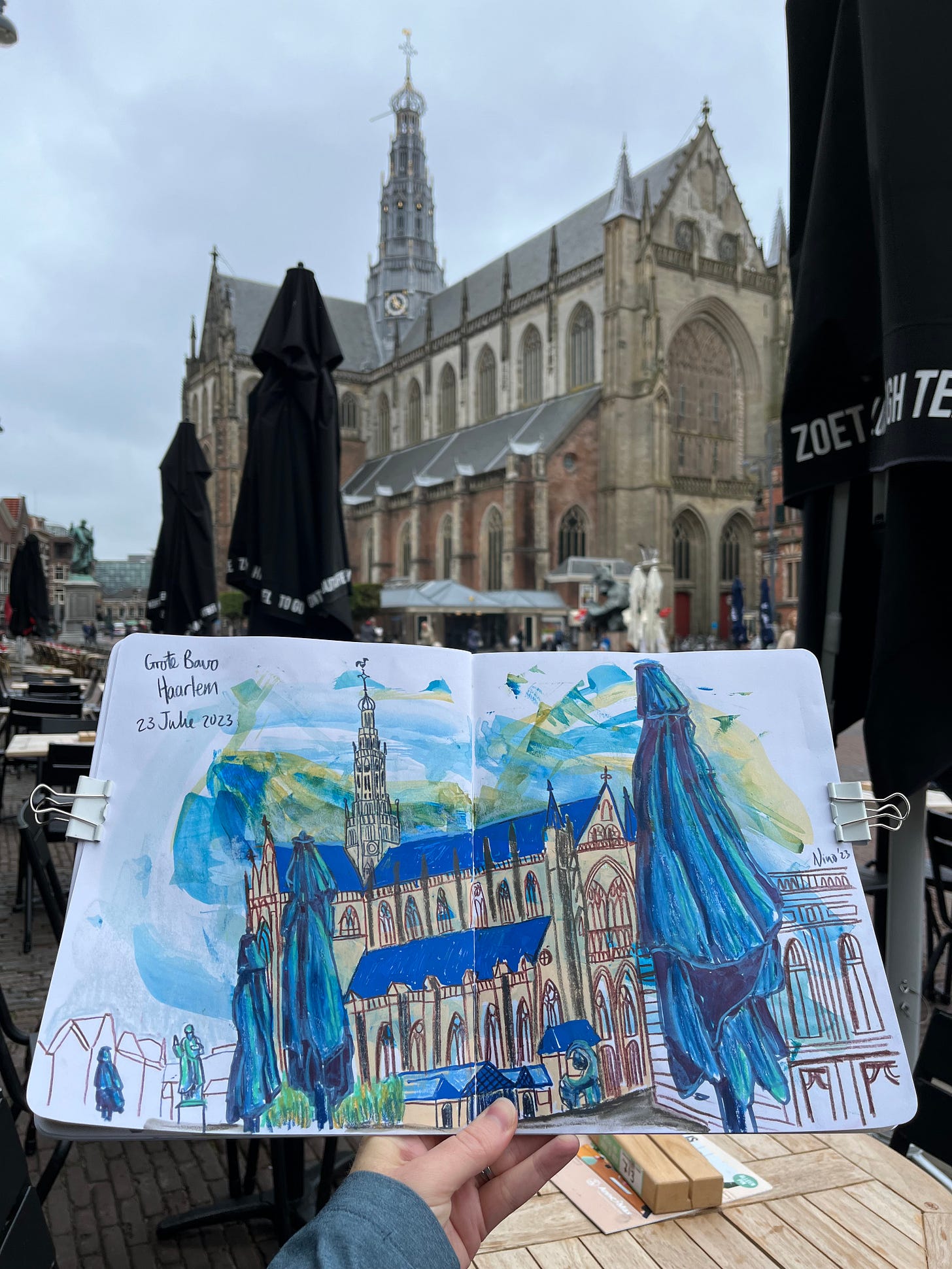Sketching on pre-prepared under paintings
Tips and tricks for making and sketching on an underpainting, plus a new sketchbook challenge and a subscriber chat thread.
Recently I have really enjoyed sketching on pre-prepared underpaintings. I will make a few backgrounds in the days before an urban sketching meetup, experimenting with fun marks and colours. Then on the day I will pick the background that captures the mood of the scene the best and then make my sketch on top of it.

I have found that by having these underpaintings, it immediately brings a bit of drama and mood to a scene that might otherwise have been a bit boring. This is also what I want to leave with you for this month’s sketchbook challenge: make a dynamic underpainting beforehand and then sketch on top of it when you are on location. To make the task less daunting, here are some tips.
Tips for making an underpainting:
Materials
The main guideline that I stick to when picking a material for the underpainting is that it has to be waterproof. My favourites to use are acrylic gouache and acrylic inks. Sometimes I will scribble a bit with an inktense pencil on the page before splashing the acrylic inks onto it. Other things that I haven’t yet used for an underpainting, but would like to experiment with are other types of waterproof ink, like indian ink. You can dilute this with water to make different shades of gray. Making some scribbles with normal coloured pencils should also create interesting effects, but might be more difficult to work in top of. It is something that I will still need to experiment with.
If you know that you won’t be using a wet medium on top, you can also use a watersoluble medium for the underpainting. Then you can go wild with watercolours, gouache or watercolour markers.
Mark making
When making the underpainting’s marks you can be as dreamy or as bold as you want to be. This is the time to be free and experimental. I like to blob some paint onto a page and then close the sketchbook so that it will smear onto the other page. Smearing the paint with a palette knife or store card is also very satisfying. You can use traditional brushes, but then there are also more untraditional things like sponges, leaves, bubble wrap, bottle caps and pieces of cloth to use. The sky is the limit. You can also decide how much of the page you want to fill with the underpainting. You can cover the whole page, or just make a few dynamic marks. Again, it is up to you and how wild you want your experiments to be.

Colours
Apart from using a waterproof medium, my other tip for making the underpainting would be to stick with a very limited colour palette. For instance you could stick to different shades of blue, or just mix two warm colours on the page. Avoid using complementary colours for the underpainting as that would draw too much attention away from your actual sketch that you will be making on top of it.
Tips for the drawing on top:
Some of my favourite materials to use on top of an underpainting are:
Acrylic markers like poscas - They are opaque and come in a wide range of dynamic colours. You can even make your own acrylic markers.
Neocolor II watersoluble wax pastels - These crayons can go on top of pretty much anything.
Derwent’s Inktense and Derwent Drawing coloured pencils - Depending on what material you used for the underpainting different types of coloured pencils work with different levels of effectiveness on top. When using acrylic gouache and ink I have found that these two types of pencils goes on top of the paint the easiest and darkest.
I have also had fun using my fude nib fountain pen filled with ink. The effectiveness of the pen will depend on how dark I made the underpainting.
Some other materials that should also work well on top of an underpainting:
Normal gouache or poster paint.
Oil pastels
Acrylic paint
If you are using a water-soluble medium like watercolours for the underpainting, the easiest would be to use dry mediums on top - things like coloured pencils, pens and crayons. Depending on the wetness of the marker it might or might not work without lifting some of the paint underneath.
Have you experimented with or used interesting underpaintings for your sketches? Share with us what worked (or didn’t work) for you.
In other news
A new artist process chat:
One thing I enjoy doing is listening to other artists talk about their process be it via a youtube video, a podcast or an old school written interview article. I know that I am not the only one here who enjoys it, so I have started a chat thread were we can share good ‘artist process’ finds with each other. Although you can also join the chat straight from your browser the easiest way to join the chat is to download the substack app which is available for both iOS and Android, and then just click on this link.
I leave you with one last sketch that I made this summer:

I hope that you enjoy this month’s sketchbook challenge and that you have many opportunities to draw and paint your heart out. Why not share this post with a friend who you think would like to try out this challenge with you?
May your days be filled with lots of creativity. Happy sketching!
Nino






Need to find courage (sounds silly) to try underpainting backgrounds! I've been seeing it on Instagram a lot and looks interesting and fun too but somehow scares me, always think that probably I will not know what to draw on it after, or that will paint a few pages and not use them at all 🙄 it's not easy to stop these doubts!
Great suggestions Nino! I often splash around some colour underneath as it takes away the blank white page and I don’t feel as intimidated in starting. I sometimes use watered down high flow acrylic in an old spray bottle and it gives a light coverage and creates some very cool effects. 😍